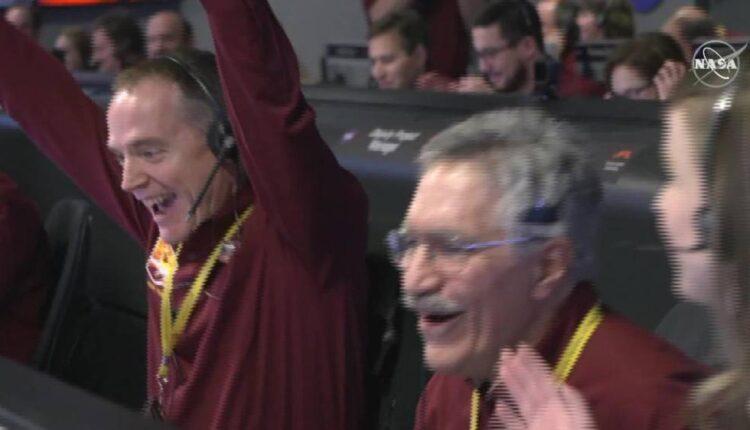(CNN)After seven months of traveling through space, the NASA InSight mission has landed on Mars. A few minutes after landing, InSight sent the official “beep” to NASA to signal that it was alive and well, including a photo of the Martian surface where it landed.
Mission Control at NASA’s Jet Propulsion Laboratory exploded into celebratory applause and cheers after the touchdown was confirmed. The landing was watched around the world and even broadcast live on the Nasdaq Stock Market tower in New York City’s Times Square. During a post-landing NASA press conference, the astronauts on the International Space Station called down to congratulate the mission team and said they “got some goosebumps” watching the coverage.

NASA celebrates the InSight landing on Mars.”Today, we successfully landed on Mars for the eighth time in human history,” NASA Administrator Jim Bridenstine said. “InSight will study the interior of Mars and will teach us valuable science as we prepare to send astronauts to the Moon and later to Mars. This accomplishment represents the ingenuity of America and our international partners, and it serves as a testament to the dedication and perseverance of our team. The best of NASA is yet to come, and it is coming soon.”Bridenstine said that Vice President Mike Pence called to congratulate the entire team.
Spoke to @NASA Administrator @JimBridenstine to congratulate him on the @NASAInsight #MarsLanding -truly a monumental achievement! Proud of our NASA Team! 🇺🇸 https://t.co/JM3n8zFxcv
— Vice President Mike Pence (@VP) November 26, 2018
Read MoreInSight, or Interior Exploration using Seismic Investigations, Geodesy and Heat Transport, is going to explore a part of Mars that we know the least about: its deep interior. It launched May 5. InSight will spend two years investigating the interior where the building blocks below the planet’s surface recorded its history. To reach Mars, InSight cruised 301,223,981 miles through space, followed by two cube satellites. The suitcase-size spacecraft, called MarCO, are the first cube satellites to fly into deep space. MarCO shared data about InSight when it entered the Martian atmosphere for the landing.
I feel you, #Mars — and soon I’ll know your heart. With this safe landing, I’m here. I’m home.
#MarsLanding https://t.co/auhFdfiUMg
— NASAInSight (@NASAInSight) November 26, 2018
“We’ve studied Mars from orbit and from the surface since 1965, learning about its weather, atmosphere, geology and surface chemistry,” said Lori Glaze, acting director of the Planetary Science Division in NASA’s Science Mission Directorate. “Now we finally will explore inside Mars and deepen our understanding of our terrestrial neighbor as NASA prepares to send human explorers deeper into the solar system.”
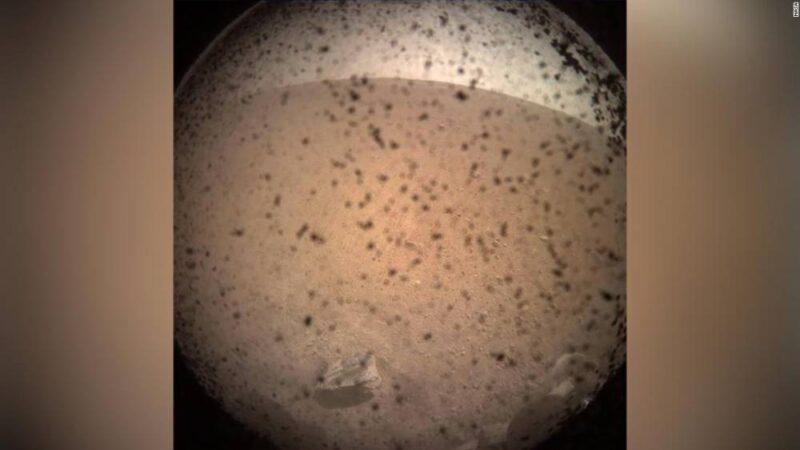
NASA’s InSight Mars lander acquired this image of the area in front of the lander using its lander-mounted Instrument Context Camera.The first image taken by InSight includes the dust cover still on the lens, which will be removed this week. The black specks are dust, and there’s a rock in the left foreground. To the right is one footpad of the lander.
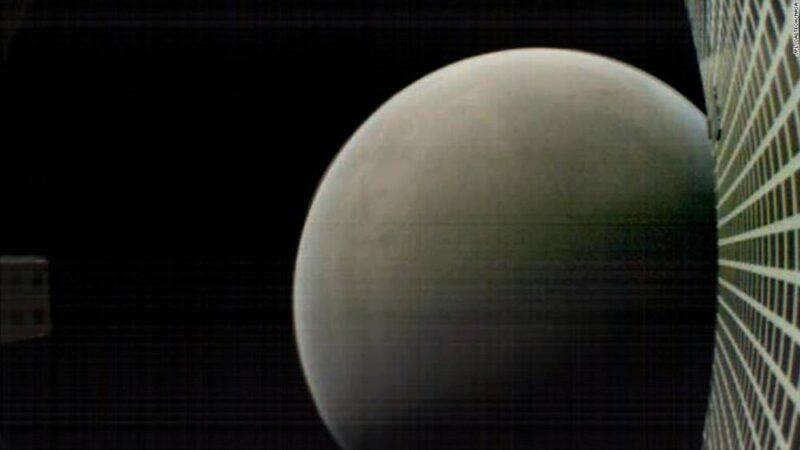
MarCO-B took this image of Mars from about 4,700 miles away. The MarCO cube satellites also bid farewell to InSight after it landed and their own mission ended. MarCO-B took an image of Mars from 4,700 miles away during its flyby at 3:10 p.m. ET after helping to establish communications with mission control about the landing.
The landing
InSight robotically guided itself through the landing. The landing itself is a tricky maneuver. NASA engineers don’t call it “seven minutes of terror” for nothing. In less time than it takes to hard-boil an egg, InSight slowed from 12,300 mph to 5 mph before it gently landed on the surface of Mars, according to NASA.”While most of the country was enjoying Thanksgiving with their family and friends, the InSight team was busy making the final preparations for Monday’s landing,” said Tom Hoffman of JPL, InSight’s project manager. “Landing on Mars is difficult and takes a lot of personal sacrifices, such as missing the traditional Thanksgiving, but making InSight successful is well worth the extraordinary effort.”Only 40% of missions sent to the Red Planet by any agency have been successful. Part of this is due to the thin Martian atmosphere, which is only 1% of Earth’s, so there’s nothing to slow something trying to land on the surface. Like the Phoenix spacecraft, InSight had a parachute and retro rockets to slow its descent through the atmosphere, and three legs suspended from the lander absorbed the shock of touching down on the surface. But the engineers prepared the spacecraft to land during a dust storm if need be. About 20 minutes before landing, InSight separated from the cruise stage that helped bring it all the way to Mars and turned to position itself for entering the atmosphere. At 2:47 p.m. ET, the entry, descent and landing phase began, and InSight came blazing into the atmosphere at 12,300 mph. Peak heating of the protective heat shield reached 2,700 degrees Fahrenheit two minutes later. This is when the intense heat caused a temporary drop in the radio signal from the craft. Then, the parachute deployed, the craft separated from the heat shield, deployed its three legs and activated radar to sense how far it is from the ground. After getting that radar signal, it separated from the remaining shell and parachute, firing its descent engines known as retrorockets to help slow it down even more. In ballet-like fashion, InSight executed a gravity turn to make sure the lander was in the right position before touching down. It slowed until it reached a consistent 5 mph. Then, it touched down at 2:54 p.m. ET. Just before 3 p.m. ET, InSight sent a signal to let scientists on Earth know that it’s alive and well. “We hit the Martian atmosphere at 12,300 mph, and the whole sequence to touching down on the surface took only 6½ minutes,” Hoffman said. “During that short span of time, InSight had to autonomously perform dozens of operations and do them flawlessly — and by all indications, that is exactly what our spacecraft did.”Bruce Banerdt of JPL, InSight’s principal investigator, said, “It’s taken more than a decade to bring InSight from a concept to a spacecraft approaching Mars — and even longer since I was first inspired to try to undertake this kind of mission. But even after landing, we’ll need to be patient for the science to begin.”
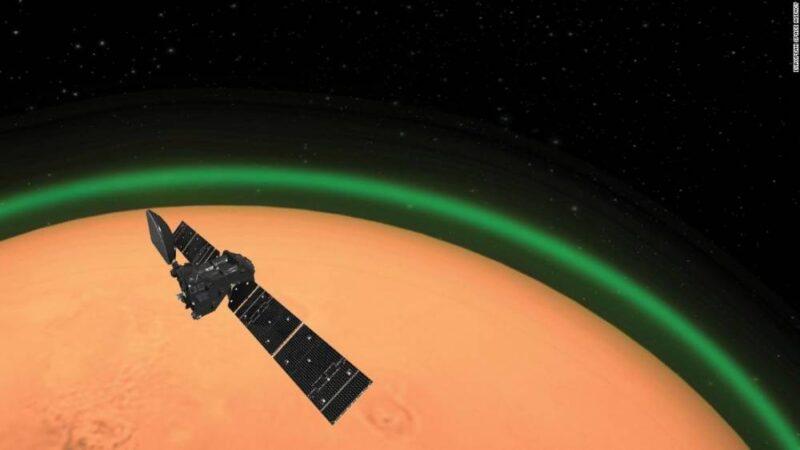
Photos: The best moments on MarsThis artist’s illustration shows the ExoMars Trace Gas Orbiter as it orbits Mars. The orbiter detected a layer of glowing green oxygen in Mars’ atmosphere. Hide Caption 1 of 30
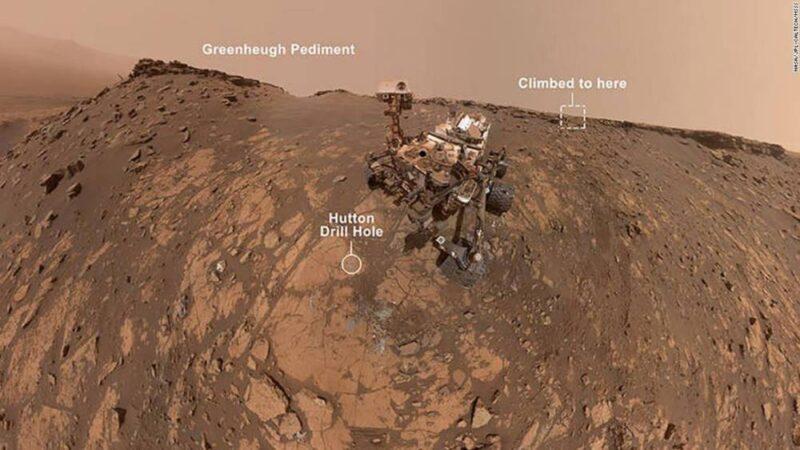
Photos: The best moments on MarsNASA’s Curiosity Mars rover took a selfie shortly before completing its steepest climb yet on Mars up the Greenheugh Pediment, which tilted the rover 31 degrees. Hide Caption 2 of 30
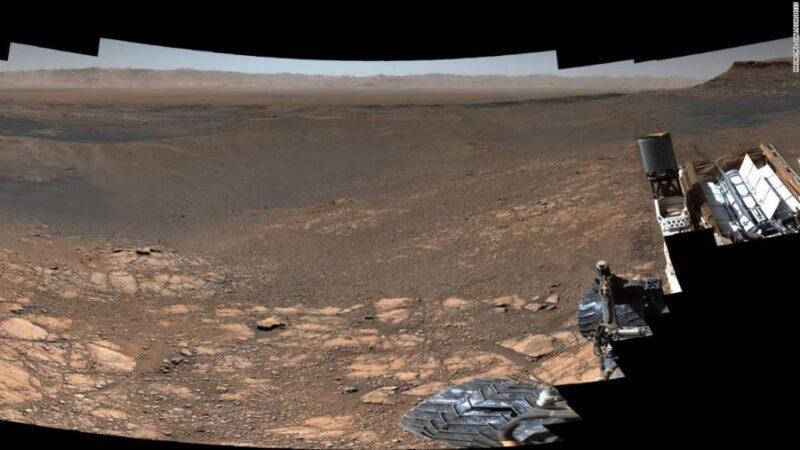
Photos: The best moments on MarsNASA’s Curiosity rover captured its highest-resolution panorama, including more than a thousand images and 1.8 billion pixels, of the Martian surface between November 24 and December 1, 2019.Hide Caption 3 of 30
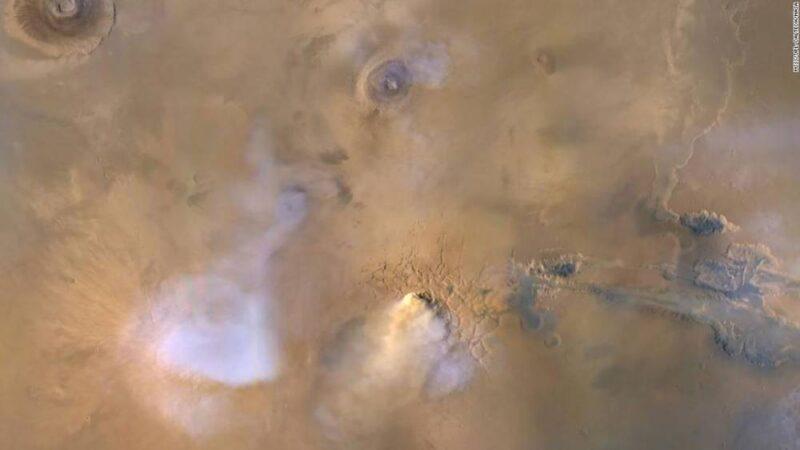
Photos: The best moments on MarsThe cloud in the center of the image is actually a dust tower that occurred in 2010 and was captured by the Mars Reconnaissance Orbiter. The blue and white clouds are water vapor.Hide Caption 4 of 30
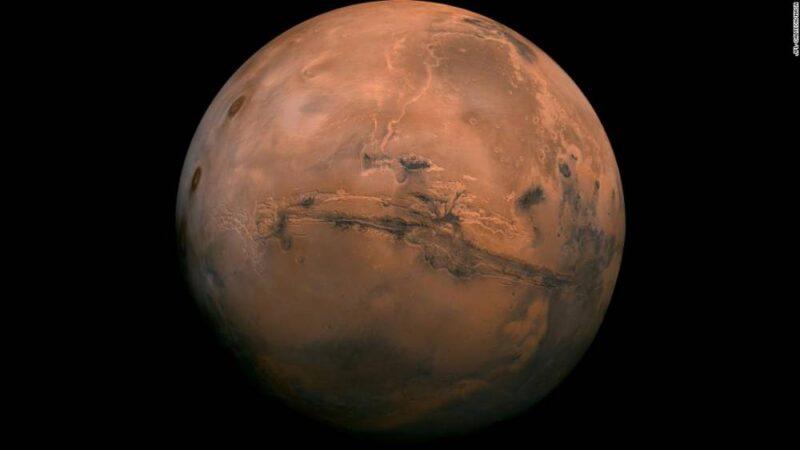
Photos: The best moments on MarsThis perspective of Mars’ Valles Marineris hemisphere from July 9, 2013, is actually a mosaic comprising 102 Viking Orbiter images. At the center is the Valles Marineris canyon system, over 2,000 kilometers long and up to 8 kilometers deep. Hide Caption 5 of 30

Photos: The best moments on MarsNASA’s Curiosity rover took this selfie on October 11, 2019, in the “Glen Etive” region.Hide Caption 6 of 30
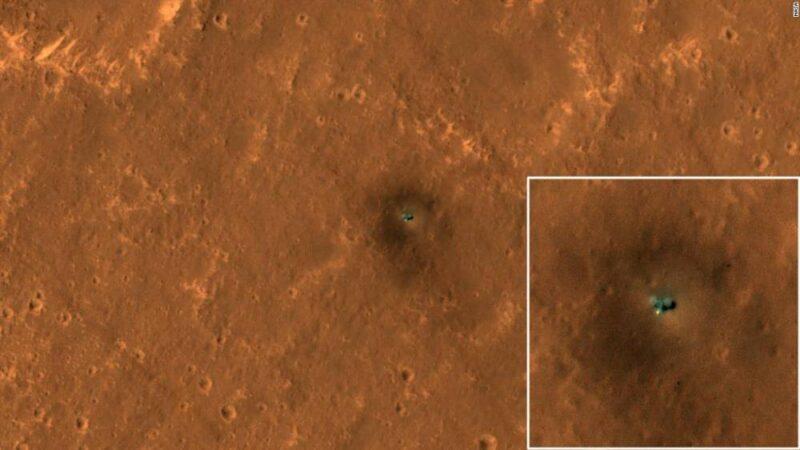
Photos: The best moments on MarsThe InSight lander was imaged from above by the Mars Reconnaissance Orbiter.Hide Caption 7 of 30
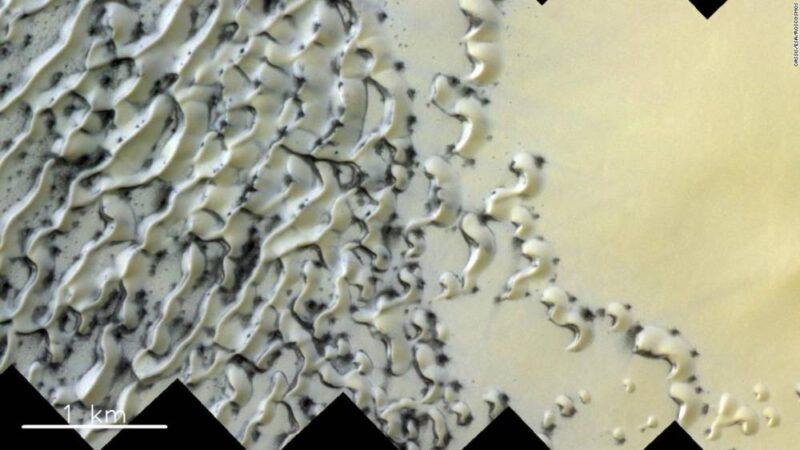
Photos: The best moments on MarsIs that cookies and cream on Mars? No, it’s just polar dunes dusted with ice and sand.Hide Caption 8 of 30
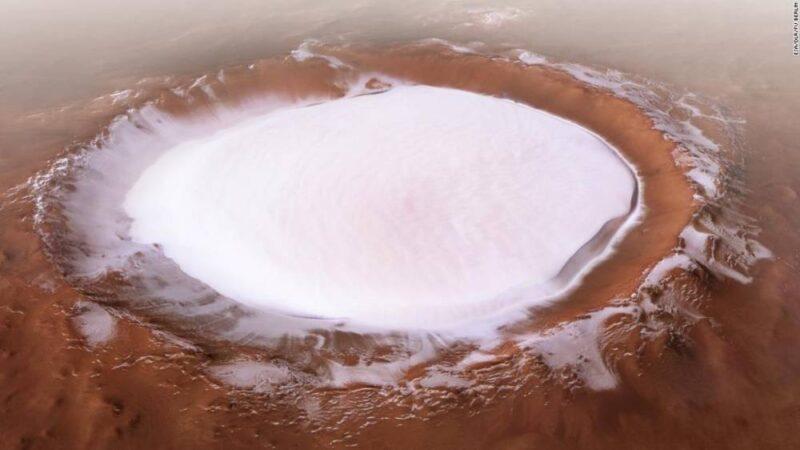
Photos: The best moments on MarsThe European Space Agency’s Mars Express mission captured this image of the Korolev crater, more than 50 miles across and filled with water ice, near the north pole. Hide Caption 9 of 30

Photos: The best moments on MarsA recent photo taken by the Curiosity rover shows its current location, known as “Teal Ridge.” The rover has been studying the clay-bearing unit in this region.Hide Caption 10 of 30
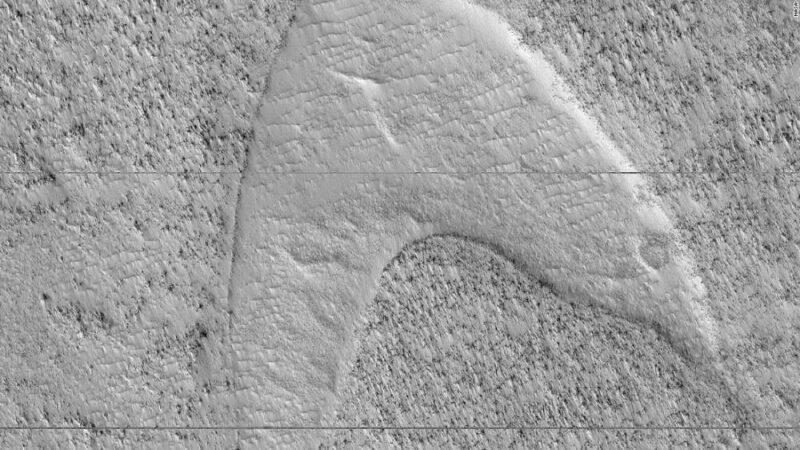
Photos: The best moments on MarsCooled lava helped preserve a footprint of where dunes once moved across a southeastern region on Mars. But it also looks like the “Star Trek” symbol.Hide Caption 11 of 30

Photos: The best moments on MarsNASA’s InSight lander used a camera on its robotic arm to capture this sunset on Mars on April 25.Hide Caption 12 of 30
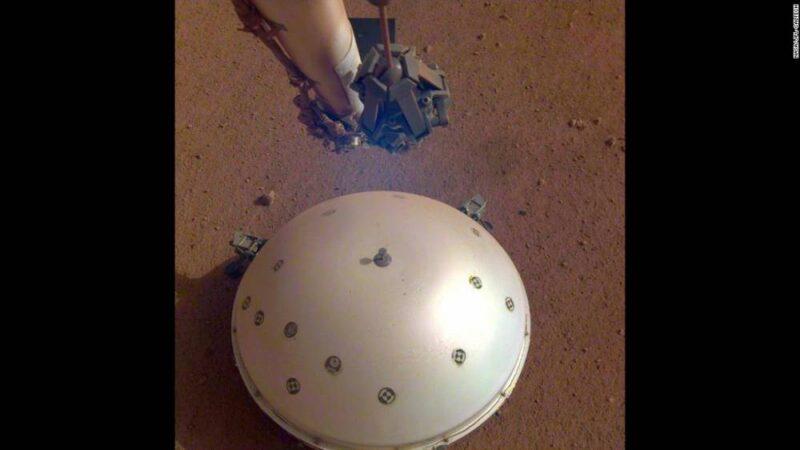
Photos: The best moments on MarsInSight’s seismometer recorded a “marsquake” for the first time on April 6, 2019.Hide Caption 13 of 30

Photos: The best moments on MarsA photo of a preserved river channel on Mars, taken by an orbiting satellite, with color overlaid to show different elevations. Blue is low and yellow is high.Hide Caption 14 of 30
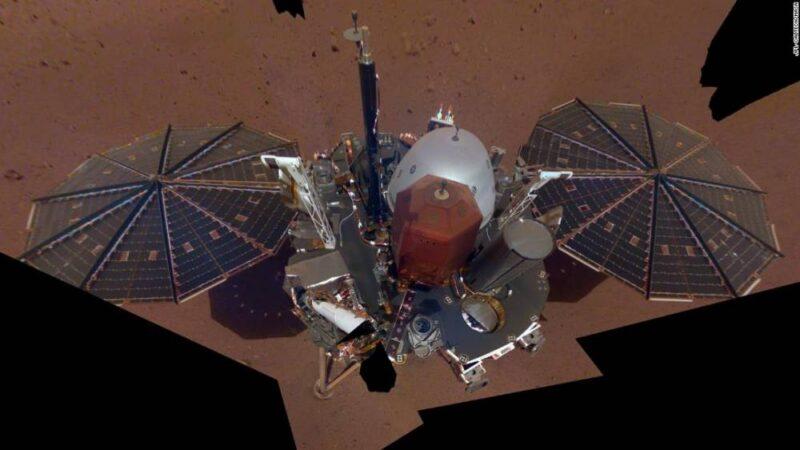
Photos: The best moments on MarsThis is NASA InSight’s first selfie on Mars. It displays the lander’s solar panels and deck. On top of the deck are its science instruments, weather sensor booms and UHF antenna.Hide Caption 15 of 30

Photos: The best moments on MarsRovers can take selfies, too. This self-portrait of the Curiosity Mars rover shows the vehicle at the Quela drilling location in the Murray Buttes area on lower Mount Sharp.Hide Caption 16 of 30
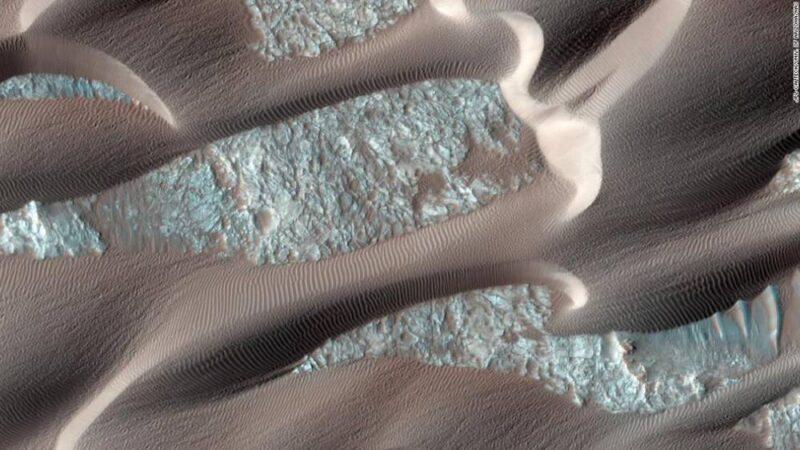
Photos: The best moments on MarsMars is far from a flat, barren landscape. Nili Patera is a region on Mars in which dunes and ripples are moving rapidly. HiRISE, onboard the Mars Reconnaissance Orbiter, continues to monitor this area every couple of months to see changes over seasonal and annual time scales.Hide Caption 17 of 30
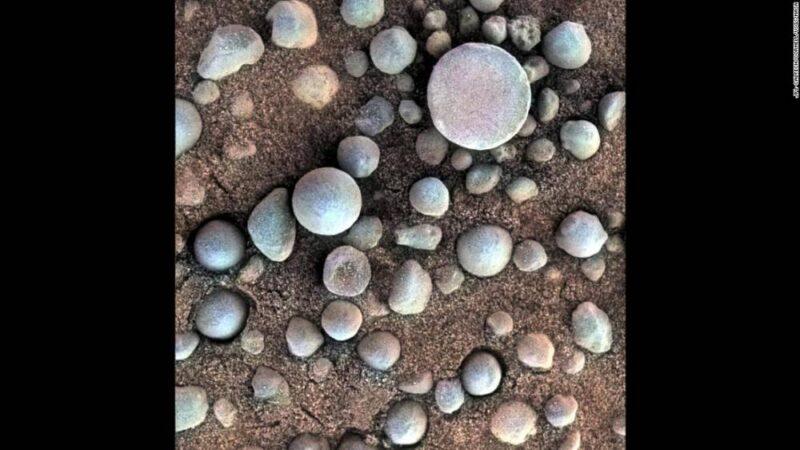
Photos: The best moments on MarsWhat are blueberries doing on Mars? These small, mineral hematite-rich concretions are near Fram Crater, visited by NASA’s Opportunity rover in April 2004. The area shown is 1.2 inches across. The view comes from the microscopic imager on Opportunity’s robotic arm, with color information added from the rover’s panoramic camera. These minerals suggests that Mars had a watery past.Hide Caption 18 of 30
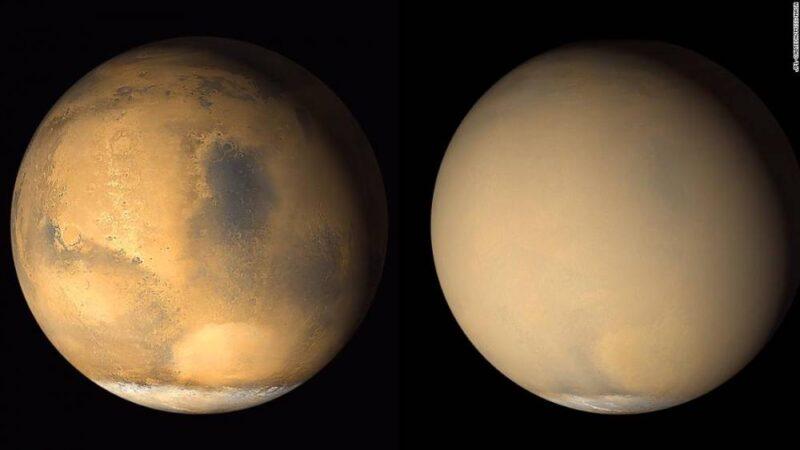
Photos: The best moments on MarsMars is known to have planet-encircling dust storms. These 2001 images from NASA’s Mars Global Surveyor orbiter show a dramatic change in the planet’s appearance when haze raised by dust-storm activity in the south became globally distributed.Hide Caption 19 of 30
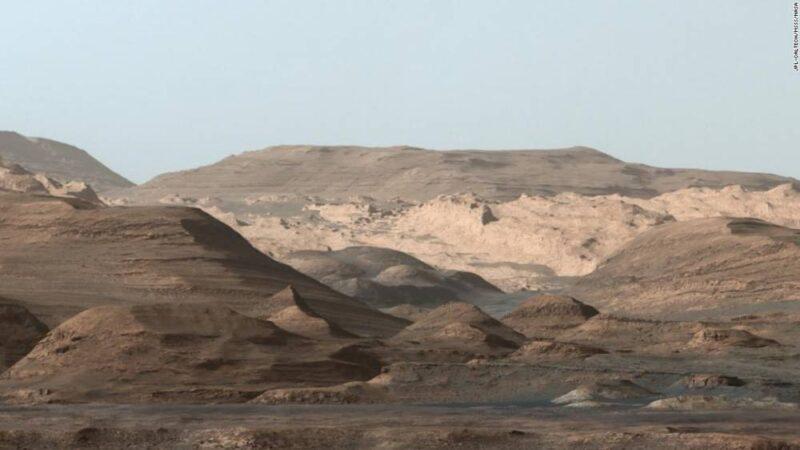
Photos: The best moments on MarsCuriosity took images on September 9, 2015, of Mount Sharp, a hematite-rich ridge, a plain full of clay minerals to create a composite and rounded buttes high in sulfate minerals. The changing mineralogy in these layers of Mount Sharp suggests a changing environment in early Mars, though all involve exposure to water billions of years ago.Hide Caption 20 of 30
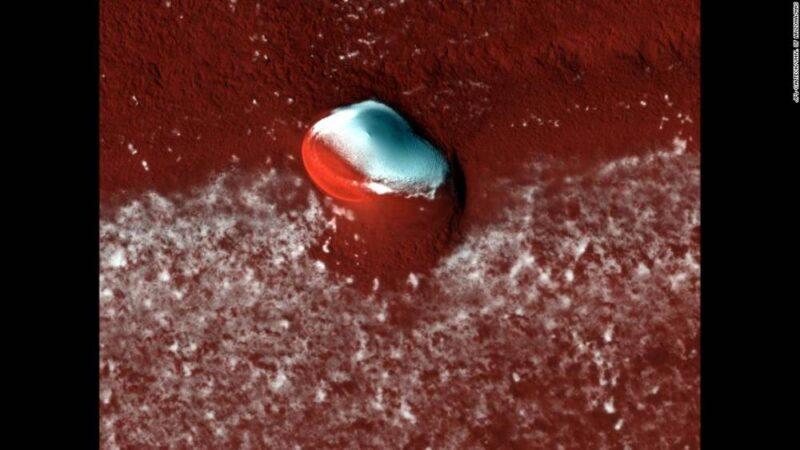
Photos: The best moments on MarsHiRISE captured layered deposits and a bright ice cap at the Martian north pole. Hide Caption 21 of 30
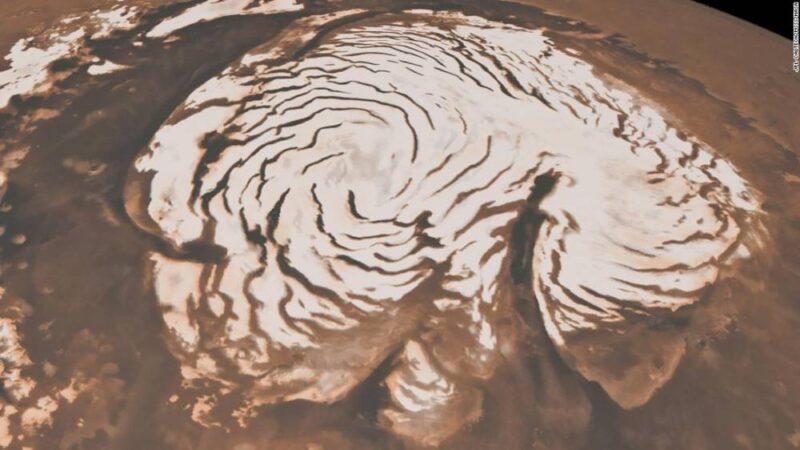
Photos: The best moments on MarsThis image, combining data from two instruments aboard NASA’s Mars Global Surveyor, depicts an orbital view of the north polar region of Mars. The ice-rich polar cap is 621 miles across, and the dark bands in are deep troughs. To the right of center, a large canyon, Chasma Boreale, almost bisects the ice cap. Chasma Boreale is about the length of the United States’ famous Grand Canyon and up to 1.2 miles deep.Hide Caption 22 of 30
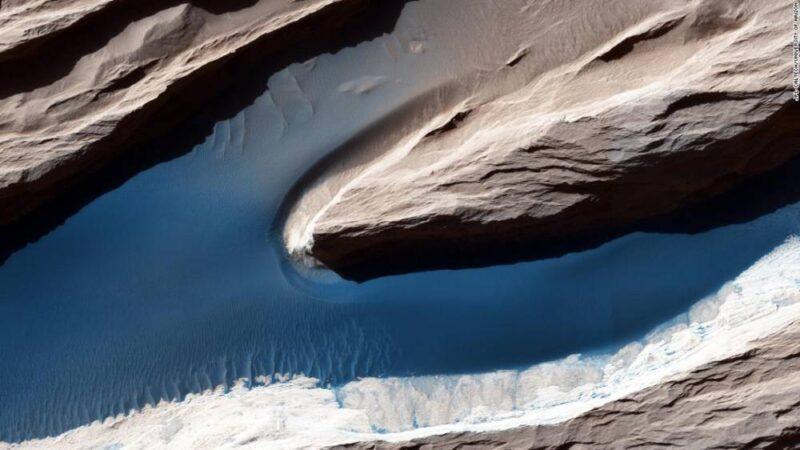
Photos: The best moments on MarsAlthough Mars isn’t geologically active like Earth, surface features have been heavily shaped by wind. Wind-carved features such as these, called yardangs, are common on the Red Planet. On the sand, the wind forms ripples and small dunes. In Mars’ thin atmosphere, light is not scattered much, so the shadows cast by the yardangs are sharp and dark.Hide Caption 23 of 30
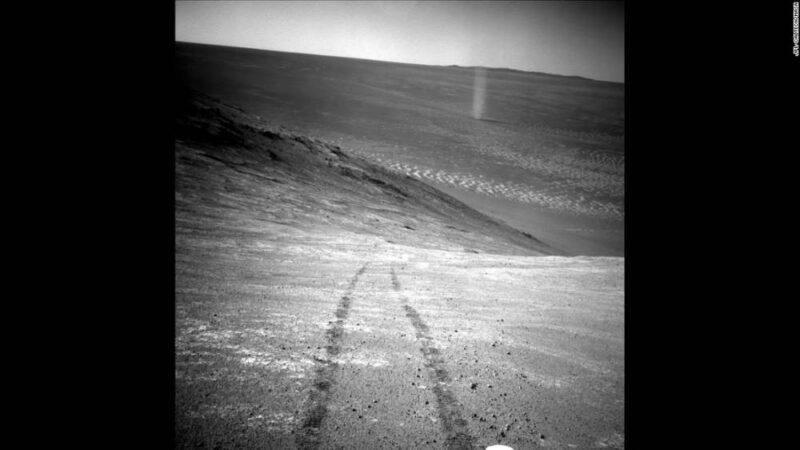
Photos: The best moments on MarsFrom its perch high on a ridge, Opportunity recorded this image of a Martian dust devil twisting through the valley below. The view looks back at the rover’s tracks leading up the north-facing slope of Knudsen Ridge, which forms part of the southern edge of Marathon Valley.Hide Caption 24 of 30
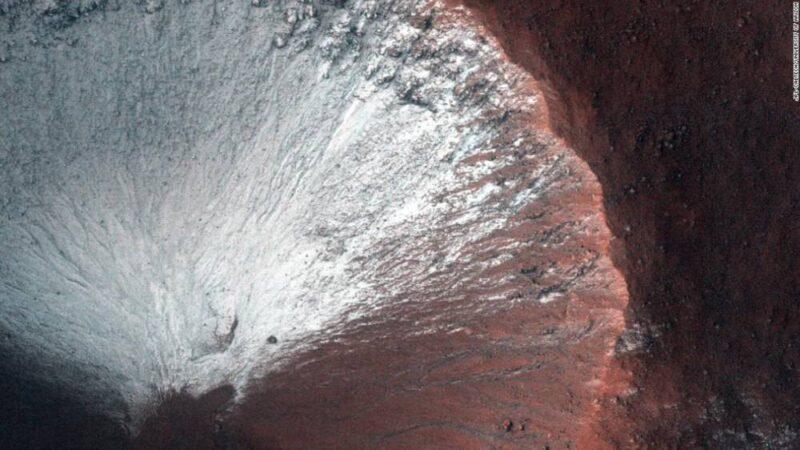
Photos: The best moments on MarsHiRISE took this image of a kilometer-size crater in the southern hemisphere of Mars in June 2014. The crater shows frost on all its south-facing slopes in late winter as Mars is heading into spring.Hide Caption 25 of 30
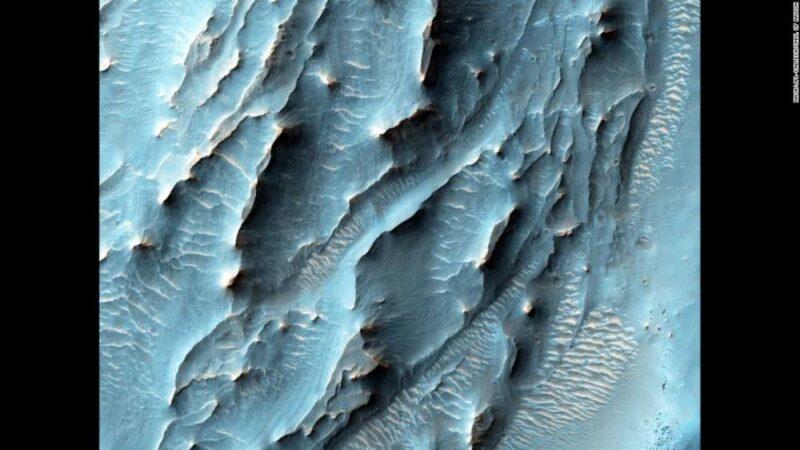
Photos: The best moments on MarsThe Mars Reconnaissance Orbiter used its HiRISE camera to obtain this view of an area with unusual texture on the southern floor of Gale Crater.Hide Caption 26 of 30
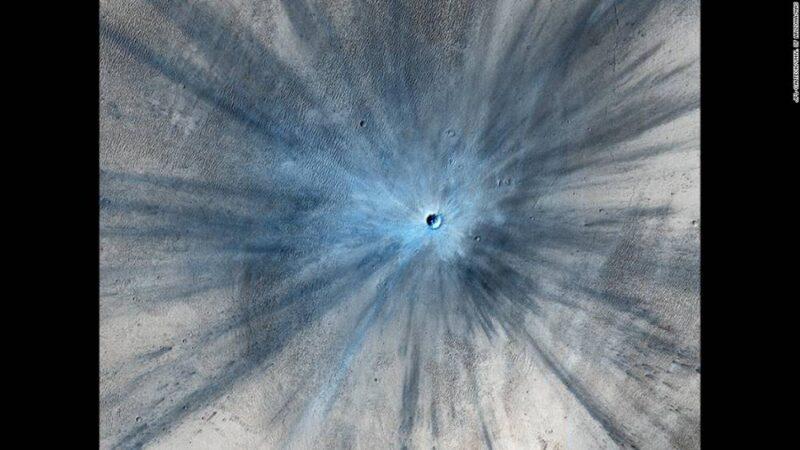
Photos: The best moments on MarsA dramatic, fresh impact crater dominates this image taken by the HiRISE camera on November 19, 2013. The crater spans approximately 100 feet and is surrounded by a large, rayed blast zone. Because the terrain where the crater formed is dusty, the fresh crater appears blue in the enhanced color of the image, due to removal of the reddish dust in that area.Hide Caption 27 of 30

Photos: The best moments on MarsOpportunity used its panoramic camera to record this eastward horizon view on October 31, 2010. A portion of Endeavour Crater’s eastern rim, nearly 19 miles in the distance, is visible over the Meridiani Planum.Hide Caption 28 of 30
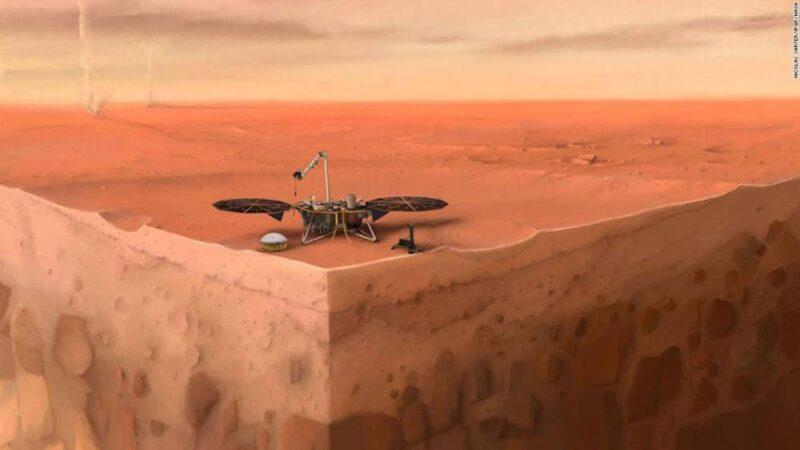
Photos: The best moments on MarsIn this artist’s concept of NASA’s InSight lander on Mars, layers of the planet’s subsurface can be seen below and dust devils can be seen in the background.Hide Caption 29 of 30
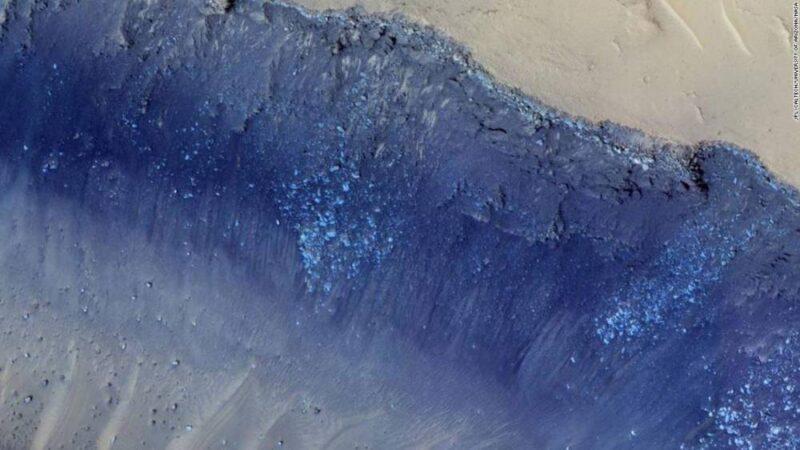
Photos: The best moments on MarsThe two largest quakes detected by NASA’s InSight appear to have originated in a region of Mars called Cerberus Fossae. Scientists previously spotted signs of tectonic activity here, including landslides. This image was taken by the HiRISE camera on NASA’s Mars Reconnaisance Orbiter.Hide Caption 30 of 30
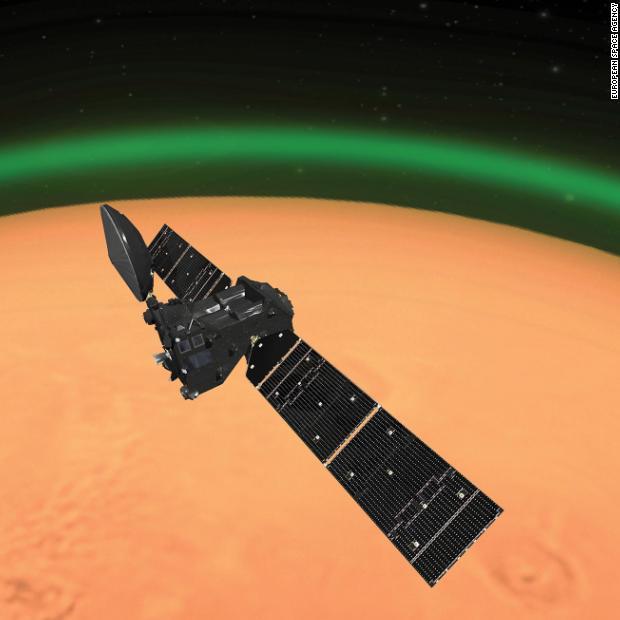
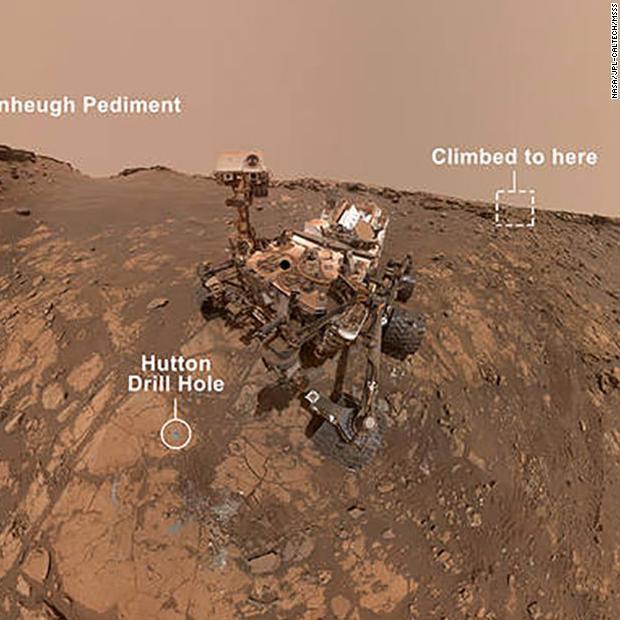
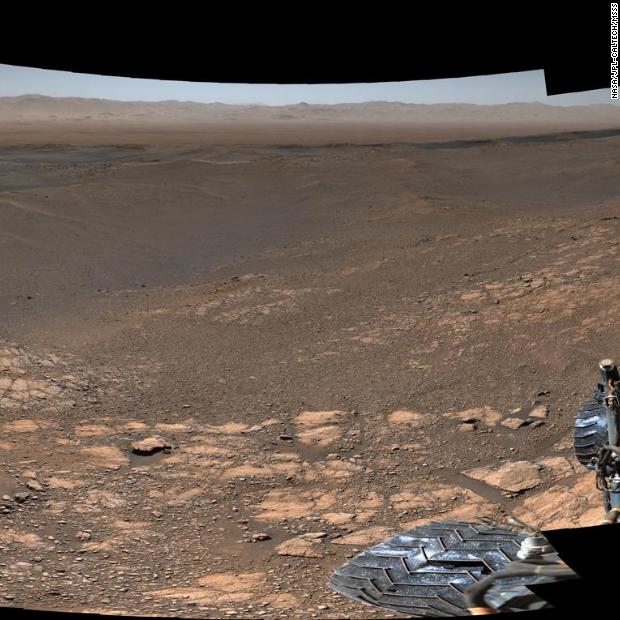
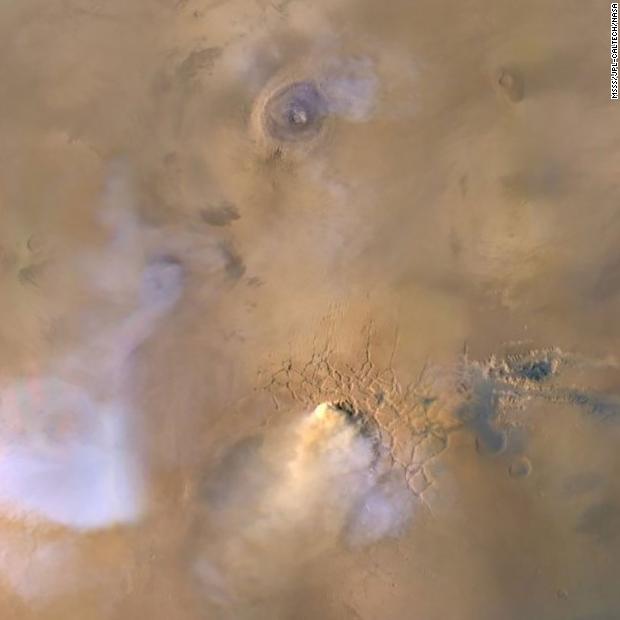
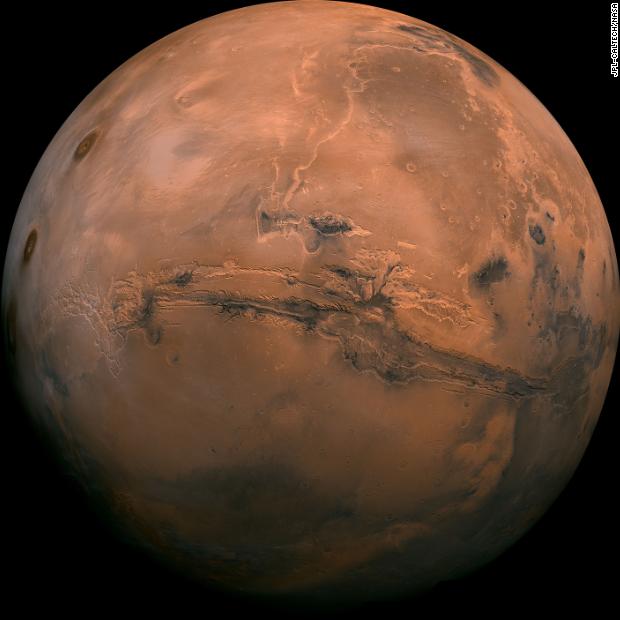
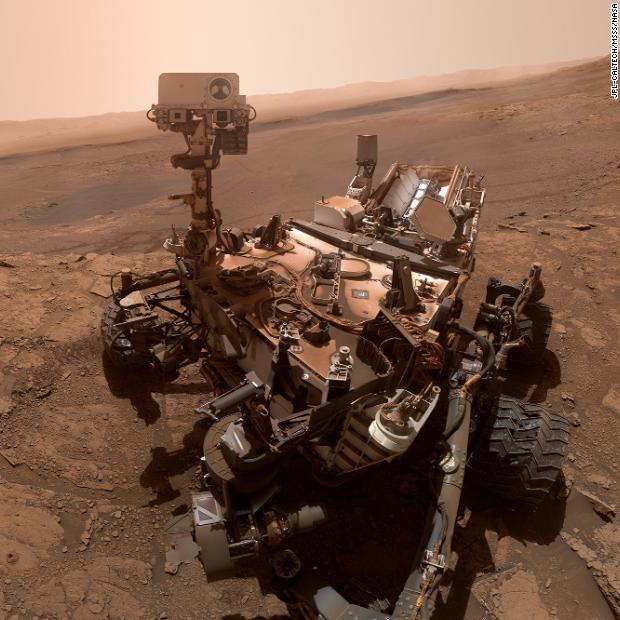
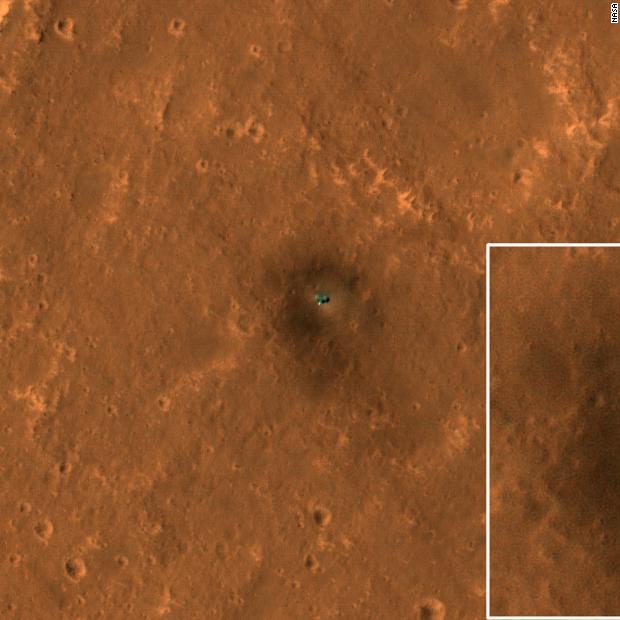
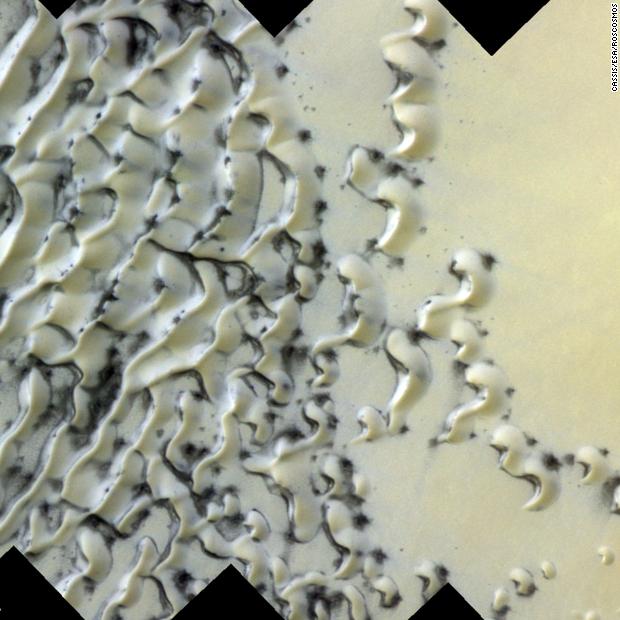
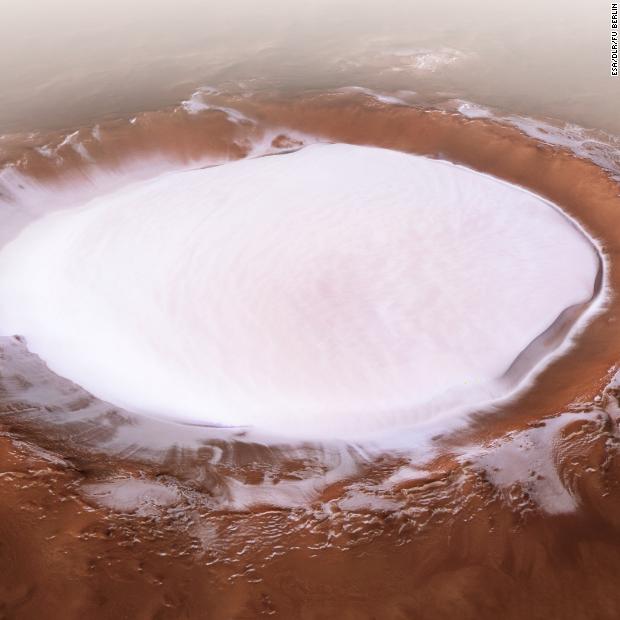
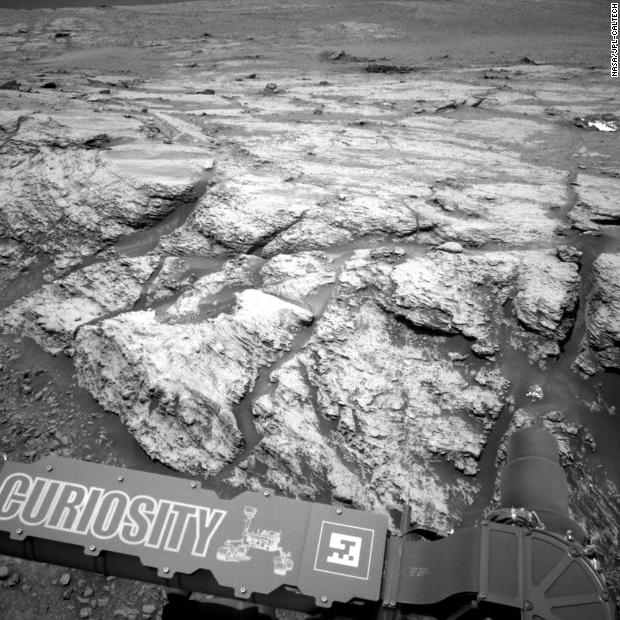
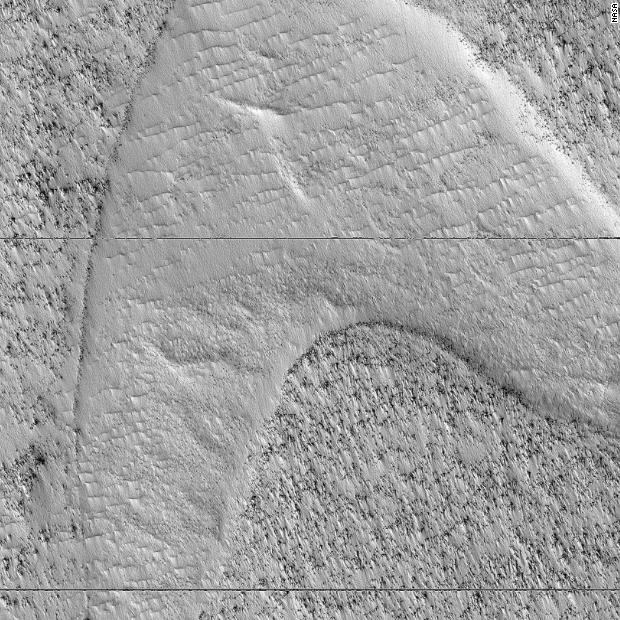
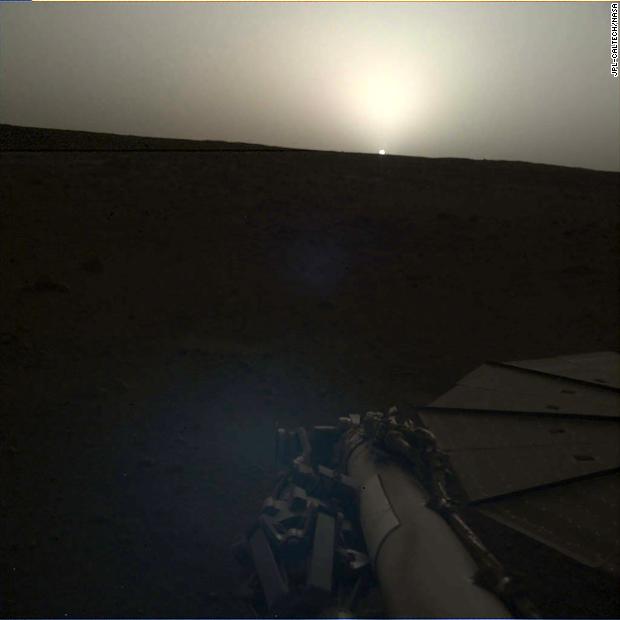
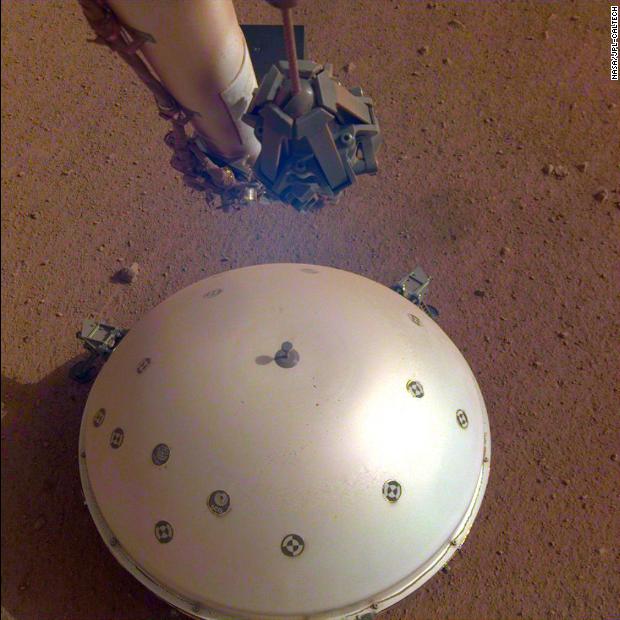
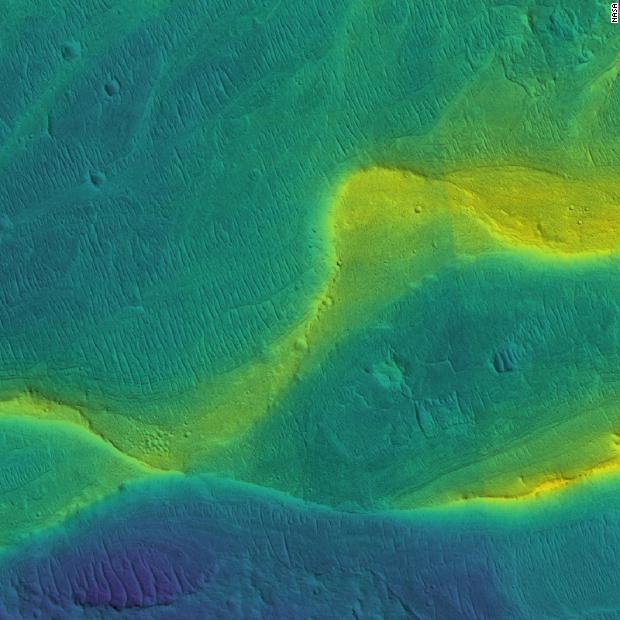
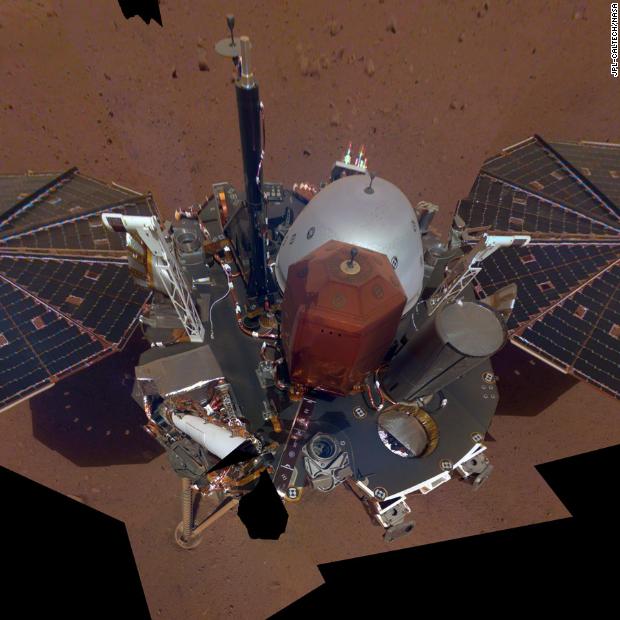
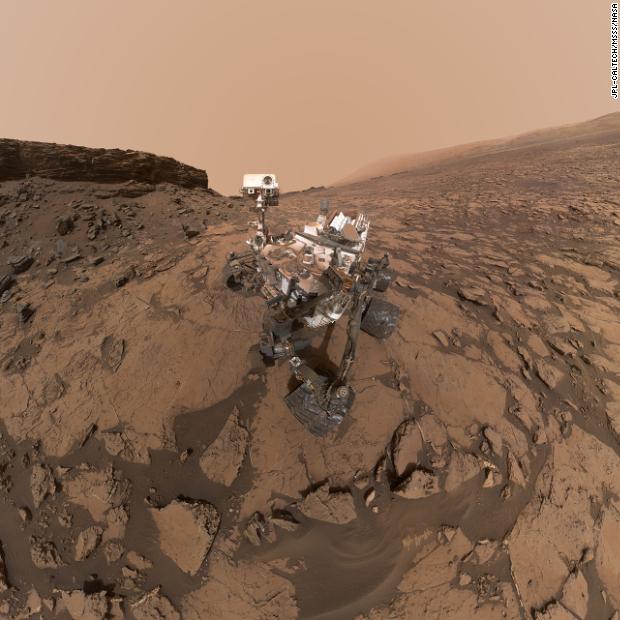
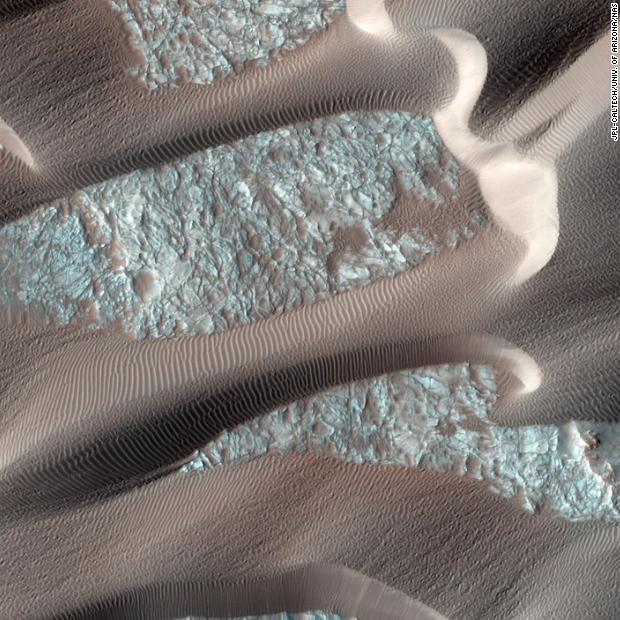
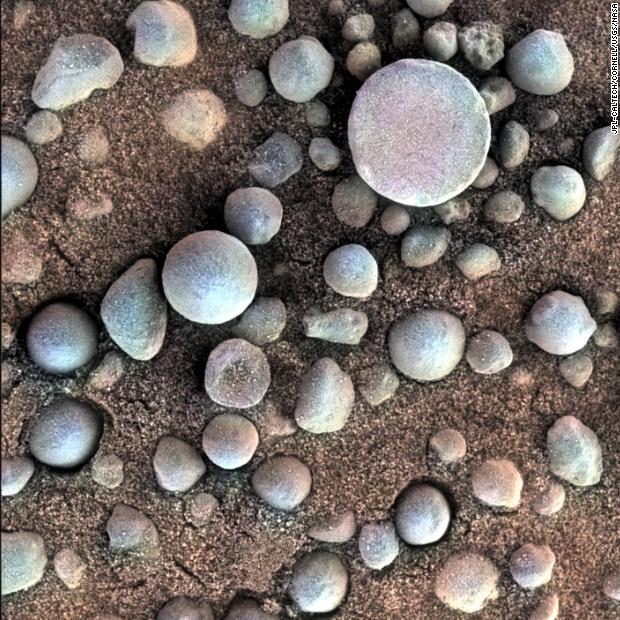
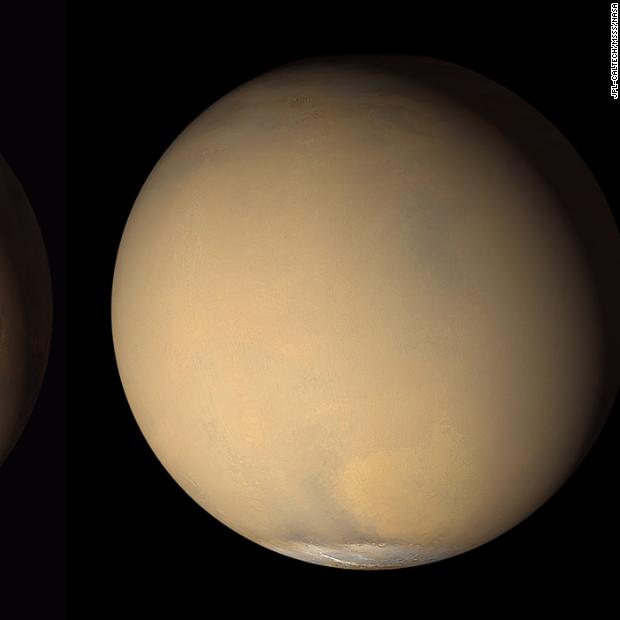
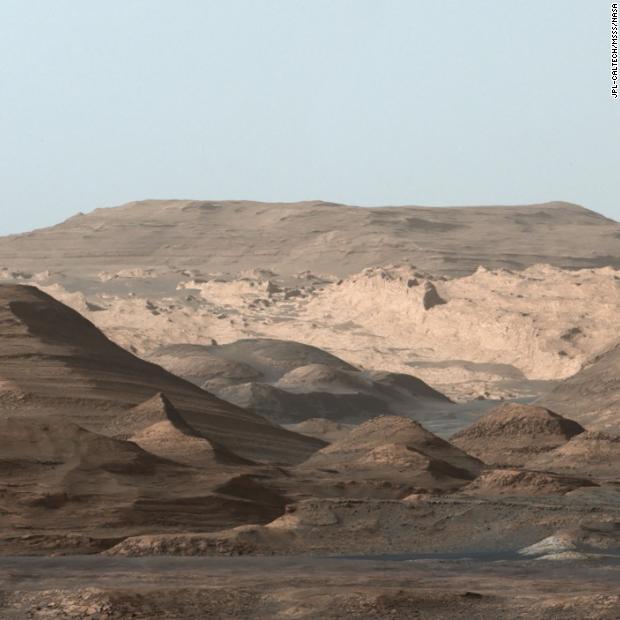
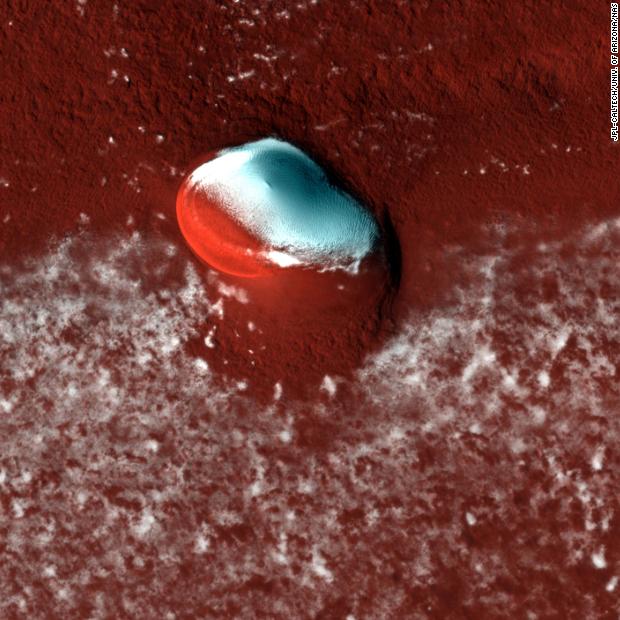
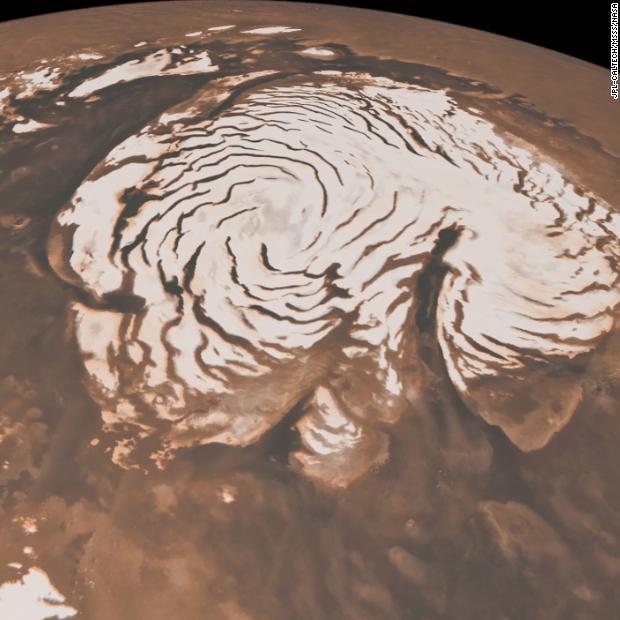
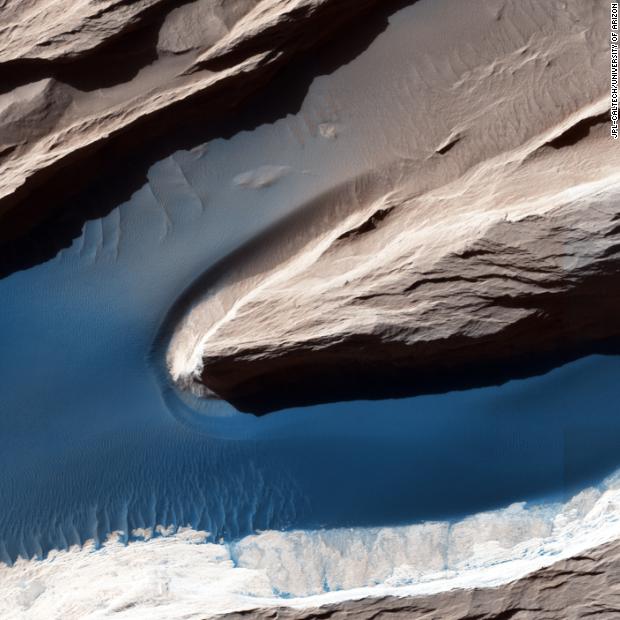

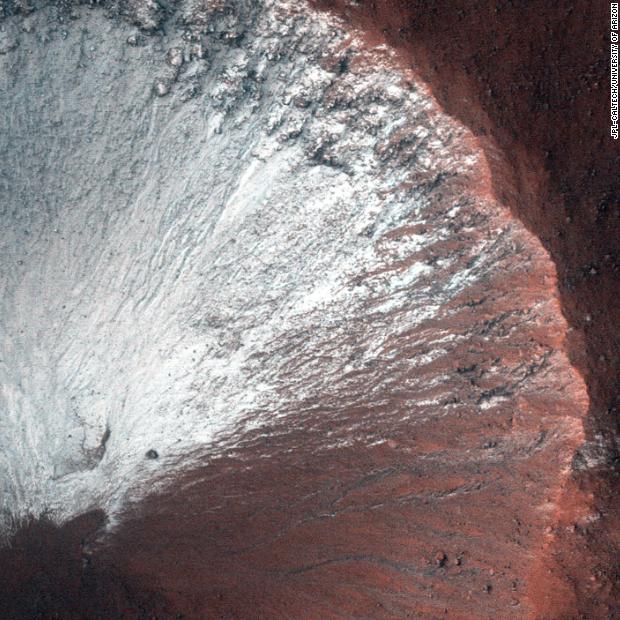

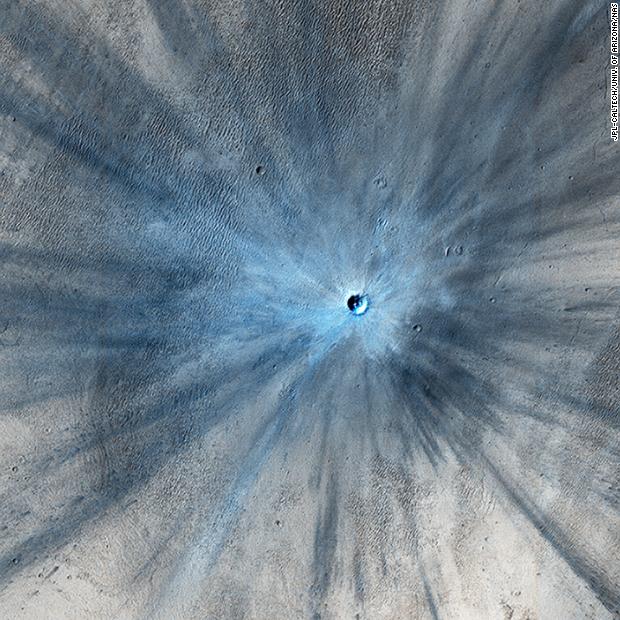
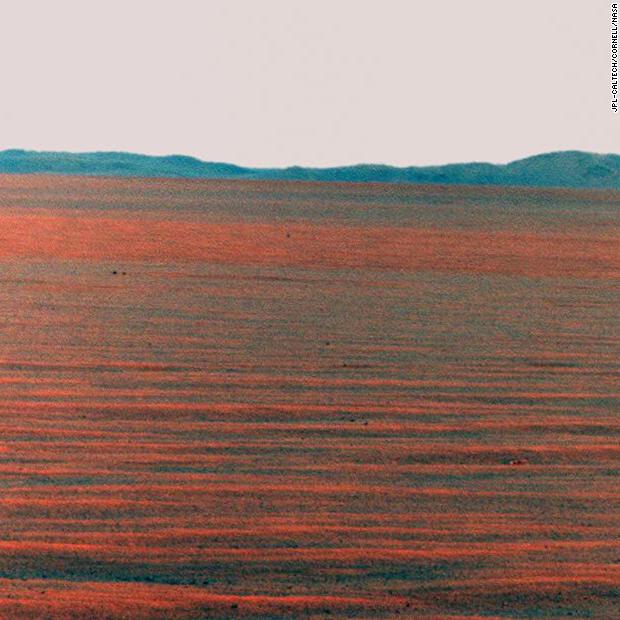
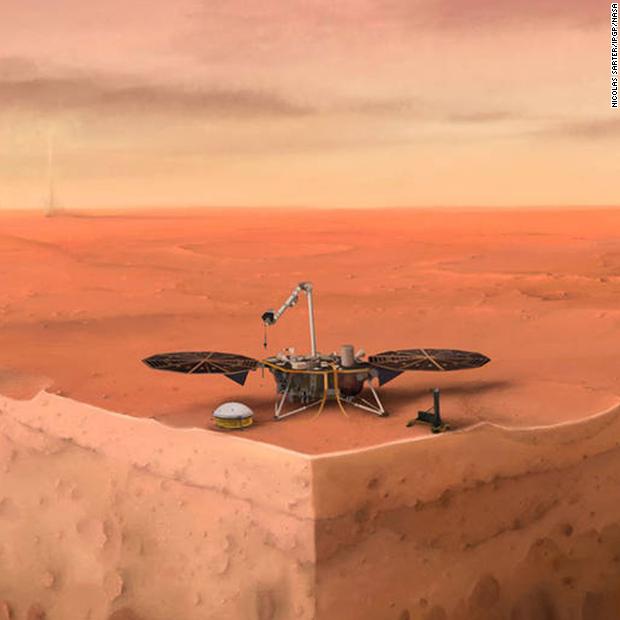
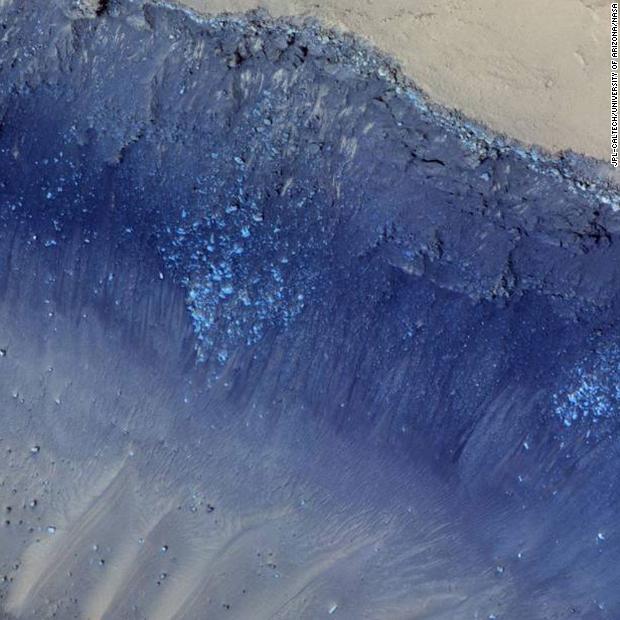
What happens next
InSight’s two-year science mission won’t begin right away. It will take two to three months for the robotic arm to place the mission’s instruments on the surface. Meanwhile, mission scientists will photograph what can be seen from the lander’s perspective and monitor the environment. Science data isn’t expected until March.Late Monday, mission scientists were able to confirm that the spacecraft’s 7-feet solar arrays have unfurled. “The InSight team can rest a little easier tonight now that we know the spacecraft solar arrays are deployed and recharging the batteries,” said Hoffman. “It’s been a long day for the team. But tomorrow begins an exciting new chapter for InSight: surface operations and the beginning of the instrument deployment phase.”
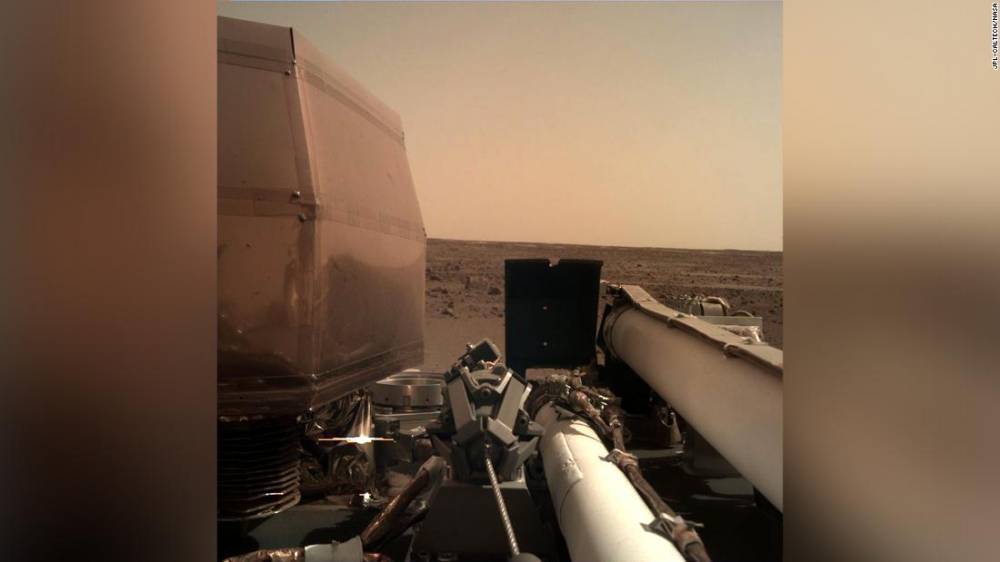
InSight acquired this image using its robotic arm-mounted, Instrument Deployment Camera.InSight landed at Elysium Planitia, called “the biggest parking lot on Mars” by astronomers. Because it won’t be roving over the surface, the landing site was an important determination. This spot is open, flat, safe and boring, which is what the scientists want for a stationary two-year mission.InSight will unfold its robotic arm and study the entire planet from its parking spot. It’s along the Martian equator, bright and warm enough to power the lander’s solar array year-round. The suite of geophysical instruments on InSight sounds like a doctor’s bag, giving Mars its first “checkup” since it formed. Together, those instruments will take measurements of Mars’ vital signs, like its pulse, temperature and reflexes — which translates to internal activity like seismology and the planet’s wobble as the sun and its moons tug on Mars. These instruments include the Seismic Experiment for Interior Structures to investigate what causes the seismic waves on Mars the Heat Flow and Physical Properties Package to burrow beneath the surface and determine heat flowing out of the planet and the Rotation and Interior Structure Experiment to use radios to study the planet’s core. “Landing was thrilling, but I’m looking forward to the drilling,” Banerdt said. “When the first images come down, our engineering and science teams will hit the ground running, beginning to plan where to deploy our science instruments. Within two or three months, the arm will deploy the mission’s main science instruments, the Seismic Experiment for Interior Structure (SEIS) and Heat Flow and Physical Properties Package (HP3) instruments.”Meanwhile, the mission for MarCO has ended. But it proves that cube satellites can survive the trek into deep space.
“Every Mars landing is daunting, but now with InSight safely on the surface, we get to do a unique kind of science on Mars,” JPL director Michael Watkins said. “The experimental MarCO CubeSats have also opened a new door to smaller planetary spacecraft. The success of these two unique missions is a tribute to the hundreds of talented engineers and scientists who put their genius and labor into making this a great day.”A previous version of this story cited a speed figure from NASA suggesting that InSight reached a top speed of 6,200 MPH. NASA adjusted their press release to reflect the top speed at atmospheric entry, which was 12,300 mph, and this story has been edited to reflect that change.
Source: edition.cnn.com

